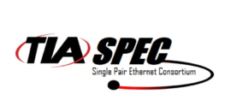About
SPEC
The Single Pair Ethernet Consortium (SPEC) of TIA represents technology leaders committed to accelerating the adoption of next generation Operational Technology (OT) and Internet of Things (IoT) connectivity using SPE Technologies.
Members include: AEM, Anixter, Belden, Berk-Tek, CommScope, Contran, Dan-Chief, Fluke Networks, Lawrence Berkeley National Laboratory, Legrand, Leviton, Panduit, R&M, The Siemon Company, Superior Essex, Surtec Industries, Telebyte SPE and Zemfyre.
The Role of Single Pair Ethernet in Data Collection
By 2025 it’s expected that there will be over 75 billion devices connected to networks around the world, ranging from sensors to robots. The intrinsic value of OT and IoT for buildings is data collection and how that data can help Building Occupants, Owners and Operators improve the user experience, increase operational efficiency and drive an overall better ROI from built spaces. While wireless connectivity can, and will, support many of these connections, wireless is limited in practicality and long-term operational viability because these devices must be powered by batteries or a separate power cable. In this context, the ability of Ethernet wired connectivity to run simultaneous data and power over a single

Standardization of OT and IoT is critical to obtaining widespread adoption. The IEEE and TIA currently are developing standards to support Single Pair Ethernet; this is an important first step but there is still much work to be done. The Building OT/ IoT ecosystem is vast, including many different industries and interested parties. How do we reach the entire ecosystem, coalesce around a standard- based technology and help propel the IoT revolution? We have gathered a panel of Building Technology ecosystem members and consumers from manufacturers of MEP systems to CRE companies, network connectivity companies and safety and security manufacturers to discuss how we will overcome this challenge.

While traditional 4-Pair Ethernet connectivity meets the technical performance requirements of these devices, the footprint for 4-pair may be cost prohibitive for micro-IoT devices and not easily incorporated into smaller equipment. Single Pair Ethernet (SPE) with its smaller footprint and Ethernet platform can deliver reliable, simultaneous power and data to the billions of devices that will make our buildings safer, smarter and more sustainable. SPE also can support runs up to 1000 meters, making it easier to replace the existing 2-wire systems with the same cabling design.

The Role of TIA SPEC
SPEC will provide vendor neutral representation for technology leaders and users across the building automation technology ecosystem and support the following goals.
- Speed awareness of Single Pair Ethernet (SPE).
- Build ecosystem support of SPE Technologies.
- Provide a collaborative forum for network and building automation technology leaders interested in utilizing Single Pair Ethernet (SPE).
- Provide case studies, proof of concepts, whitepapers and reference architectures.
- Work in partnership with other SPE initiatives and Building Automation Technology organizations.
Founding members of SPEC are Belden, CommScope, Leviton, Panduit and the Siemon Company. Participation in SPEC is open to all companies interested in accelerating the acceptance of SPE technologies in building automation technology and networks. These include building operators and design & engineering professionals in all areas of the ecosystem such as, Mechanical Electrical and Plumbing system manufacturers, Building Management Solution providers, Building IoT solution providers, structured cabling manufacturers, network equipment manufacturers including Medium Dependent Interface (MDI) and Other Equipment Manufacturers, and Building Technology Integrators. Learn how you can participate by contacting liz@goldsmithpr.com.
















